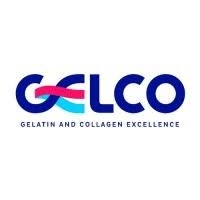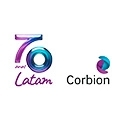Chocolate and alternative dairy challenges in spotlight for CP Kelco, “stabilizing cocoa particles is key,” says exec
February is a month when all-things chocolate are in the spotlight. Last week saw significant chocolate-inspired Valentine’s Day NPD and now, examines the broader use of cocoa in food and beverage innovation. Specifically, the challenges associated with stabilization and suspension in alternative dairy beverages, a space which continues to grow as part of the broader plant-based trend. We speak with CP Kelco’s Veronica Borne, Manager for Technical Services, Americas.
Manufacturers are looking for formulating solutions to help navigate challenges associated with ingredients such as soy, almond, coconut, pea and rice. They can all present difficulties, however, when creating a dairy-based or plant-based milk beverage, cocoa particles are the biggest formulation challenge, according to Borne.
“Cocoa is an insoluble fiber. It’s primarily made up of cellulose fibers that swell when water is introduced. The swelling will make the particles heavy and fall, creating that unattractive layer of sediment on the bottom of a beverage. In order to make a chocolate milk that doesn’t separate, product developers need to act to help suspend cocoa,” she explains. A thickening agent or stabilizer can increase the viscosity of the liquid and “trap” the cocoa particles so they can’t sink. The chocolate milk then stays evenly blended during its shelf life.
Another concern is regarding the shelf life of the chocolate beverage. Borne says CP Kelco understands most consumers are okay with giving the bottle a little shake before consuming. “But if you don’t have any stabilizers present, and the bottle has been sitting for an extended period of time, the beverage will have a hard pack layer of insoluble particles on the bottom, leaving an unattractive top and bottom layer,” she says.
It’s also important to understand the chemical properties of chocolate, Borne highlights. “Another challenge to using it in milk-based beverages is its natural acidity. Cocoa will have an average acidity pH range of around 5 to 6. The alkalization of cocoa makes it a more versatile ingredient, with a neutral pH range of 7 to 8, so it dissolves more easily in liquids. A side benefit of alkalizing cocoa is that it makes it darker in color and mellower in flavor,” she explains.
Pea-based protein beverages
As it stands, there is plenty of movement in the alternative dairy beverage space. One example of this is a chocolate pea protein beverage. Some sources of plant protein fortification, including pea, have bitter notes or a sandy texture and require more assistance with mouthfeel. Chocolate is a great mask for that, says Borne. “In fact, you’ll notice that many protein and nutrition beverages use chocolate now as a way to mask the off-notes and help provide a neutral flavor profile,” she adds.
According to Borne, most plant proteins have bitter notes – from beany to grassy – that require masking. “Chocolate is also notoriously bitter but it can help subdue the plant protein intensity,” she comments.
In addition to the cocoa, pea protein is also an insoluble fiber. This unique formulation therefore requires the suspension of both insoluble fibers as well as assistance in enhancing the mouthfeel to have any kind of long-term stability. “It’s important to note that there is no one-size-fits-all stabilizing solution for working with alternative protein in beverages,” continues Borne. “It would also not be the same if you wanted to fortify with calcium.”
What’s the key to chocolate-based beverages?
The key to formulating chocolate-based beverages is to stabilize the cocoa particles so they are dispersed evenly throughout – and not settling in a layer on the bottom, notes Borne. “The density of the cocoa is higher than the liquid, so gravity pulls it down,” she details.
There are several nature-based, stabilizing ingredient solutions available. KELCOGEL HM-B Gellan Gum from CP Kelco is a fermentation-derived ingredient. It can help suspend cocoa particles without changing mouthfeel. This gellan gum is specifically created for milk-based beverages and can withstand processing like UHT.
“If you want to add mouthfeel and creaminess to your beverage or give the impression of indulgence without the extra calories, we recommend using a nature-based stabilizer. For example, we recently created KELCOGEL DF Gellan Gum for dairy-based beverages that specifically assists in both suspension and mouthfeel. This is a bonus if you want to use just one ingredient. On the other hand, if you are creating a plant-based beverage, we can suggest another one of our nature-based ingredients like KELCOGEL HA-B or HS-B Gellan Gum grades for suspension,” Borne states.
How does the future look for chocolate and milk-based beverages?
“We know that more consumers are interested in understanding what’s on the ingredient list of their favorite snacks – even when they indulge in chocolate,” Borne states. Higher cocoa content is also trending for its antioxidants and minerals, which is winning over more fans looking for health benefits, she reveals.
“Another value-added benefit is that a higher cocoa content means a lower sugar content, so chocolate is great for flavoring reduced-calorie formulations. It’s important to know that sugar is not only a sweetener but a bulking agent. Any reduction in sugar will also alter the melt point, shear stability and pH value. A stabilizer is needed to help bring back those qualities to the formulation,” Borne further explains.
“The market is getting a second life with dairy alternatives and the new blended trend of dairy and plant-based milk for even more protein fortification. Lactose intolerance is a global concern and more people identify as ‘flexitarian’ so lactose-free blends seem like a win-win for providing the taste and nutrition of dairy as well as less sugar,” she concludes.


































